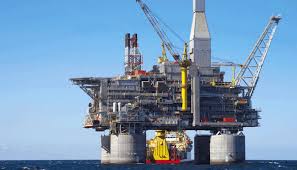The number of crude oil drilling rigs operating in Nigeria rose to 46 this week, according to the Nigerian Upstream Petroleum Regulatory Commission (NUPRC). This marks a steady increase from last week’s count of 44 rigs, and a significant leap from the previous figure of just eight recorded before 2024.
NUPRC Chief Executive, Gbenga Komolafe, disclosed the update on Wednesday in Abuja during a Strategic Workshop for Media Practitioners organised by the Public Affairs and Corporate Communications Unit of the commission. He noted that the increase is a direct result of ongoing reforms, improved investor confidence, and regulatory efficiency in the sector.
“As of today, the rig count is 46,” Komolafe announced. “That’s a reflection of our performance and a daily evaluation of our progress. I monitor this through my dashboard because we are focused on performance. I work with a very resilient team committed to optimizing and valorising Nigeria’s hydrocarbon resources.”
Just a week earlier, during the Nigerian Oil and Gas (NOG) Week 2025, Komolafe had reported that the country’s rig count had climbed to 44. This was already being hailed as a major achievement, considering that the industry recorded only eight active rigs when the NUPRC began its current reforms.
The increase in rig activity is a key indicator of growth in exploration and production activities. It comes at a time when the country is working to boost crude oil output and regain its standing among top oil producers. According to Komolafe, Nigeria’s daily crude oil production now stands at approximately 1.7 million barrels per day, up from around 1 million barrels when the reform journey began.
The boost in output is part of NUPRC’s “One Million Barrels per Day Additional Production Initiative,” launched in August 2024. The aim was to grow Nigeria’s daily crude oil output by one million barrels within a year. Komolafe noted that the country has already achieved 300,000 barrels per day increase since the launch of the programme.
“The data is encouraging,” he said. “We have recorded an increase of 300,000 barrels per day, and this is a testament to what can be achieved with the right policies and teamwork.”
He also praised the positive feedback from operators in the oil sector, noting that oil companies have been responding well to the reforms, especially those aimed at improving regulatory clarity, streamlining approvals, and encouraging investments.
Komolafe acknowledged the support from President Bola Tinubu, who has signed several Executive Orders (Nos. 40, 41, and 42) designed to incentivise investment in Nigeria’s oil and gas sector. These executive orders focus on tax reliefs, faster contract processing, and improved local content participation.
“These reforms are already yielding results. They have played a key role in unlocking Final Investment Decisions (FIDs) for major upstream projects,” he said. “Investors are committing substantial capital because of the confidence they have in the regulatory environment.”
According to him, the rising rig count also signals strong optimism in Nigeria’s upstream petroleum industry and reflects the improved policy environment that is now driving investor re-engagement.
Komolafe said NUPRC will continue working with industry players to ensure that the country not only meets but exceeds its crude oil production targets, especially in light of the global energy transition.
“We will not relent in creating the kind of enabling environment needed to sustain this growth. Our target remains to add another 700,000 barrels per day to reach the one million goal,” he added.
The rig count is considered a key performance indicator in the global oil industry, as it reflects the level of exploration, development, and production activities within a country. Nigeria’s rebound from single-digit rig activity to 46 within a year is seen as a sign that the reforms in the oil sector are beginning to pay off.
